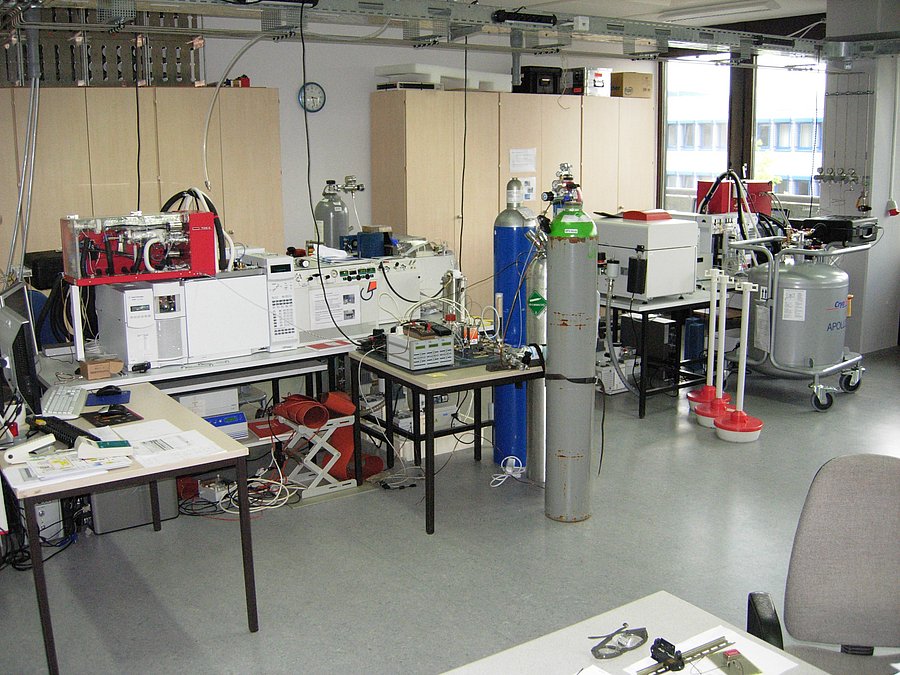Stable Isotopes - the fingerprints of the trace compounds
New Isotope Ratio Mass Spectrometer set up in Wuppertal
Trace gases play an important role in the Earth's atmosphere. In most cases chemical and dynamical processes are investigated in an indirect way by measuring concentration and distribution of trace gases, and their spatial and temporal variation. Sometimes however, it is impossible to distinguish chemical reactions (e.g. photochemical removal) from transport processes (e.g. change of air masses due to change in wind direction). Trace gases contain stable isotopes. Isotopes are atoms of the same element, but "heavier" than the normal element, because their nucleus contains more neutrons than that of the normal element. (e.g. carbon-12 with 6 neutrons versus carbon 13 with 7 neutrons). The isotope ratio of trace gases varies with their sources, it changes due to chemical reactions in the atmosphere and thus can be used as a "clock" showing the residence time of trace gases in the atmosphere, but also due to the mixture of different air masses. Stable isotope ratios can be seen as a "fingerprint" of the process influencing the concentration and distribution of trace gases.
The measurement of stable isotope ratios provides important additional information about trace gases in the atmosphere. We are able to identify their sources, to identify the chemical transformation in the atmosphere, as well as their "photochemical" age. We will use this method to investigate volatile organic compounds, which are emitted from a variety of anthropogenic and natural sources. The vast number of different compounds, their different sources, and their different life times in the atmosphere (minutes to months) offer numerous options to investigate atmospheric processes in detail.

